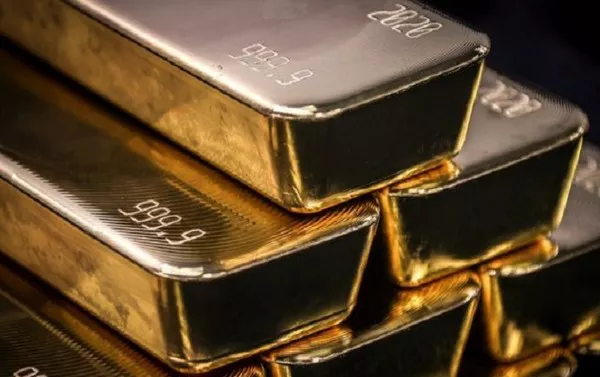Gold has captivated human imagination for millennia, cherished for its intrinsic beauty, rarity, and versatility. Throughout history, civilizations have revered gold, attributing to it a value that transcends mere material wealth. In modern times, despite the advent of various currencies and financial instruments, gold continues to hold a prominent place in the global economy. This article delves into the multifaceted reasons behind the enduring value of gold, exploring its historical significance and contemporary relevance.
Historical Context:
The allure of gold dates back to ancient civilizations, where it was regarded as a symbol of wealth, power, and divine connection. From the lavish tombs of pharaohs in ancient Egypt to the opulent palaces of emperors in Rome, gold adorned the most prestigious artifacts and monuments. Its scarcity and incorruptibility contributed to its mystique, establishing it as the ultimate store of value.
Across cultures and epochs, gold served as a medium of exchange, facilitating trade and commerce. The inherent stability of gold as a precious metal endowed it with trustworthiness, unlike perishable commodities or fluctuating currencies. Civilizations minted gold coins as a standardized unit of value, providing a basis for economic transactions and fostering prosperity.
Gold’s value transcended economic realms, permeating religious, cultural, and societal domains. It featured prominently in religious rituals, adorned deities, and sanctified sacred spaces. Its lustrous allure symbolized purity, enlightenment, and transcendence, elevating it beyond mundane materialism.
Economic Significance:
In modern economies, gold retains its status as a valuable asset, prized for its unique properties and financial characteristics. As a hedge against inflation and currency devaluation, gold serves as a store of wealth, preserving purchasing power over time. Unlike fiat currencies susceptible to manipulation by governments and central banks, gold maintains its intrinsic worth, immune to political whims and economic fluctuations.
The scarcity of gold, coupled with its enduring demand, underpins its value as a long-term investment. Investors seek diversification and stability in their portfolios, turning to gold as a safe haven during times of uncertainty and market volatility. Its liquidity, recognized globally, ensures that gold remains a readily tradable asset, accessible to investors across borders.
Central banks, custodians of monetary stability, continue to hold significant gold reserves as a form of insurance against systemic risks. Gold provides reassurance in times of financial crisis, bolstering confidence in the stability of national currencies and the broader financial system. The prudent allocation of gold reserves enhances a country’s economic resilience, safeguarding against geopolitical uncertainties and external shocks.
Industrial Applications:
Beyond its traditional roles as a monetary asset and store of value, gold boasts a myriad of industrial applications, further augmenting its intrinsic worth. Its exceptional conductivity and corrosion resistance make it indispensable in electronics, telecommunications, and aerospace industries. Gold’s malleability and ductility render it ideal for intricate medical devices, dental prosthetics, and luxury ornaments.
The versatility of gold extends to the realm of art and craftsmanship, where it serves as a medium for creativity and expression. Goldsmiths and artisans transform this precious metal into exquisite jewelry, intricate ornaments, and timeless works of art. The aesthetic appeal of gold transcends cultural boundaries, transcending generations and evoking a sense of timeless elegance.
Environmental Considerations:
While gold’s value is undeniable, its extraction and processing raise environmental concerns, necessitating sustainable practices and responsible mining techniques. Gold mining operations can have significant ecological impacts, including habitat destruction, soil erosion, and water contamination. Efforts to mitigate these effects through reclamation, restoration, and stringent regulations are imperative to ensure the long-term viability of gold mining.
Furthermore, recycling and refining processes offer opportunities to minimize the environmental footprint of gold production. Recycled gold from electronic waste, jewelry, and industrial scrap reduces the need for virgin extraction, conserving natural resources and mitigating environmental degradation. Embracing circular economy principles fosters a more sustainable approach to gold supply chains, balancing economic prosperity with environmental stewardship.
See Also How Much Is A Pure Gold Coin Worth? A Comprehensive Guide
Conclusion:
In conclusion, the enduring value of gold stems from a convergence of historical, economic, and cultural factors, spanning millennia of human civilization. Its intrinsic beauty, rarity, and versatility have endowed gold with a timeless allure, transcending geographical boundaries and cultural divides. In modern economies, gold retains its significance as a store of wealth, a hedge against uncertainty, and a cornerstone of financial stability.
As we navigate the complexities of a rapidly evolving world, the intrinsic value of gold serves as a beacon of stability amidst turbulent seas. Embracing sustainable practices and responsible stewardship, we can ensure that gold continues to shine brightly, enriching lives and inspiring generations to come.


